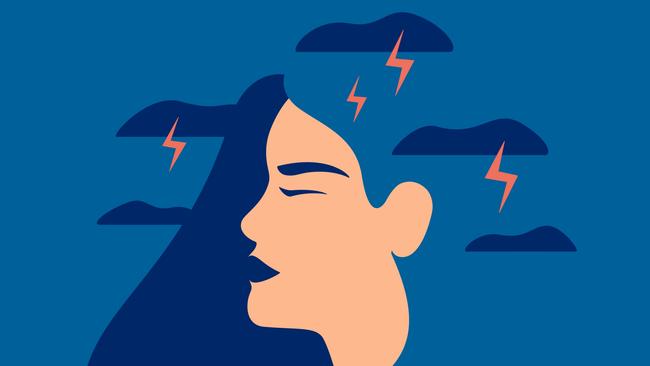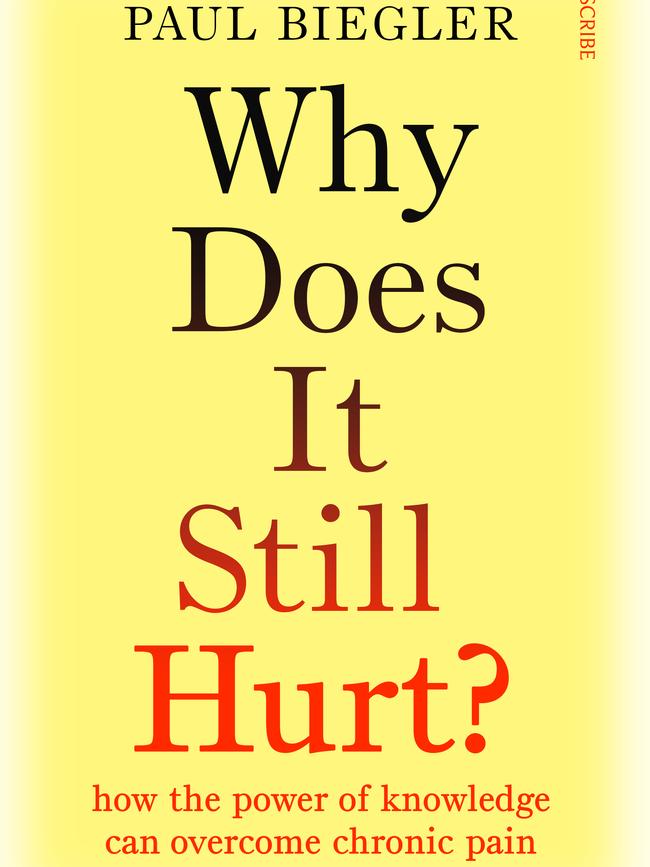Hypnosis and walking may trump surgery and opioids for many chronic pain sufferers
Paul Biegler’s experiences with long-term pain inspired a book to help fellow sufferers.

Pain tends to get a bad rap. Its reputation as a hindrance rather than a help is warranted to a point, but it’s easy to forget the important role pain plays in our wellbeing.
When working properly, our pain response acts as a safety system, ensuring we’re not washing our hands with boiling water or running marathons with a broken ankle.
But for the one in five Australians over 45 dealing with chronic pain, there’s a good chance this system has gone awry.
And the effects can be devastating, not just physically, but psychologically.
“You start to question if this is ‘all in your head’,” says Michelle Irving, a former senior executive who has been dealing with chronic pain and its effects for more than a decade.
In her 40s, the former corporate executive was rendered bed-bound for nine months due to vertigo-inducing chronic migraines. The recurring pain lasted almost four years, and the resulting trauma inspired her to become a chronic illness coach. She now supports women with chronic pain and health issues who are trying to manage their health conditions while returning to the workforce.
Irving has seen scores of women dealing with mystery chronic pain and the psychological trauma, confusion and hopelessness that often coincide with it.
“The stress of being undiagnosed has a significant impact on your body and mental wellbeing,” she says. “Without diagnosis, you don’t have a treatment plan, so you don’t know how long it will take to get one, and if you will ever get one.
“Imagine being at sea in a boat in a storm and continually being buffeted around, getting bruised and battered.
“You can’t see land and you feel you will never reach it because the storm is relentless.
“It’s not just an assault on your physical body, but the mental toll is extraordinary.”
Previously, there were two main classifications of pain. Nociceptive pain, which is felt in response to inflammation and/or injury, and neuropathic pain, created in response to sensory nerve damage.
But it’s only in recent times that the International Association for the Study of Pain has named a third classification, nociplastic pain, which describes hypersensitivity to tissue damage, even when an injury is resolved.
Writer and former emergency medicine physician Paul Biegler’s own experience with nociplastic pain, and the realisation that information for sufferers was limited, prompted his new book, Why Does It Still Hurt?

“If you injure your knee or back in the short term, then pain is an accurate indicator that you’ve done some damage, whether it be to the bones or soft tissues,” he explains.
“But when pain becomes chronic or persistent, lasting more than 10 weeks or so, pain becomes a very poor marker of tissue damage. And the reason is that with chronic pain we can often undergo a process of central sensitisation.”
Once simply dismissed as a symptom of a mental illness, it’s now understood central sensitisation is in fact a syndrome in which the nervous system becomes abnormally highly sensitised.
For Biegler, something as innocuous as a light breeze was enough to elicit intense knee pain, despite a cycling injury to his knee having healed.
“It is called maladaptive neuroplasticity and, when pain stays put, it can mean stimuli that are non-nociceptive – not legitimately pain-producing – get mistakenly registered as nociceptive – they bloody hurt. This is what I call the pain mistake,” the Eureka Prize winner explains in his book.
To put it simply, “things that shouldn’t hurt that much, hurt a lot more”, he says.
Biegler concedes that in recent decades scientific and allied health experts have begun to take the concept of nociplastic pain seriously and try to explore the reasons it happens as well as how best to treat it.
But despite this, information and awareness of the common issue have been slow to reach those who need it most; the sufferers. “That’s one of the main reasons I wanted to write the book,” he says.
Pain is expensive. It cost the economy $144.1bn in 2020, according to Pain Australia’s most recent annual report, and affects about 3.4 million Australians, a staggering 68 per cent of whom are of working age. Pain and mental health are also common comorbidities, with the report indicating people with chronic pain issues had a high rate of depression and were two to three times more likely than the general public to exhibit suicidal behaviour.
And, unfortunately, research is showing that negative thoughts may not just perpetuate but increase feelings of pain.
“It’s quite an enlightened response and that is that we not only need to target our sensory pathways, but also our brains and our negative catastrophic thinking about pain,” Biegler explains.
“We know that negative thoughts such as ‘I’m never going to get better’, ‘I’m damaged for life’, those negative thoughts and a fear of movement associated with that, called kinesiophobia … those fears and negative feelings are very strong predictors of whether people are going to get persistent pain.”
Nationally, pain is a lucrative business. The current market for over-the-counter pain medication in Australia is valued at $785.5m. We’ve become conditioned to pop a pill at the first hint of discomfort.
And, while the opioid crisis in America is widely known, it’s happening on our doorstep too.
In 2018, research led by clinical pharmacist Natasa Gisev at the National Drug and Alcohol Research Centre at the University of NSW reported that Australia ranked eighth among the countries with the highest opioid use.
But if we’re discovering more and more evidence that pain can be “learned” by the body’s brain and nervous system, is it possible to unlearn it too, without over-reliance on analgesic medications?
When it comes to nociplastic pain, research is now leaning to “yes”, according to Biegler. This is in part due to “bioplasticity”, another term that describes the ability of not just the brain but the body’s nerves and other systems, to adapt in response to changes in the internal and external environments.
Research into how to take advantage of our body’s bioplasticity is still emerging, but everything from the use of virtual reality and hypnosis to exercise therapy is being explored. And these methods, as Biegler explores in his book, are showing promise for chronic pain sufferers.
The journalist concedes he was initially sceptical about the idea of hypnotherapy as a potential treatment for chronic pain. “I was pretty reluctant to include it in the book and then I started looking at the literature.”
He cites a program at the Montreal Children’s Hospital in which hypnotherapy is being used to allow doctors to apply local anaesthetic and a therapy called Ericksonian hypnosis to conduct procedures including liver biopsies and peripherally inserted central catheters, which in many cases – especially with children – would require sedation.
“Essentially what they do is take the child into an imaginary place,” he explains. The use of hypnosis to manage chronic pain is something Mark P. Jensen, whom Biegler interviews in his book, has been investigating for decades.
Professor Jensen’s research in the area has shown that evidence-based suggestions – such as reassurance that a specific pain does not correspond to physical injury – are more likely to be adopted while under hypnotherapy when our brains are producing theta and alpha brainwaves.
“If you accept the area that has been painful is actually safe, and doesn’t have a catastrophic injury, that can turn the threat down, and it means (the brain is) less likely to make pain from sensations coming from that area,” Biegler says.
Chronic pain is a complex issue, and one not easily solved. But by deepening our knowledge of how both the brain and our sensory nerves have evolved to protect us, science is discovering ways to retrain these areas when this primal mechanism no longer serves us.
Biegler hopes his book will give chronic pain sufferers a broader understanding and empower them to make informed choices as to how to manage it.
“In order for a person to give fully informed consent to any treatment for persistent pain, they really need to have a good understanding of the mechanisms and potential presence of central sensitisation,” he says.
“This is knowledge that’s really important and isn’t out there, and I think people need this information to make better choices in pain management.”
Why Does it Still Hurt? by Paul Biegler, is out now.

